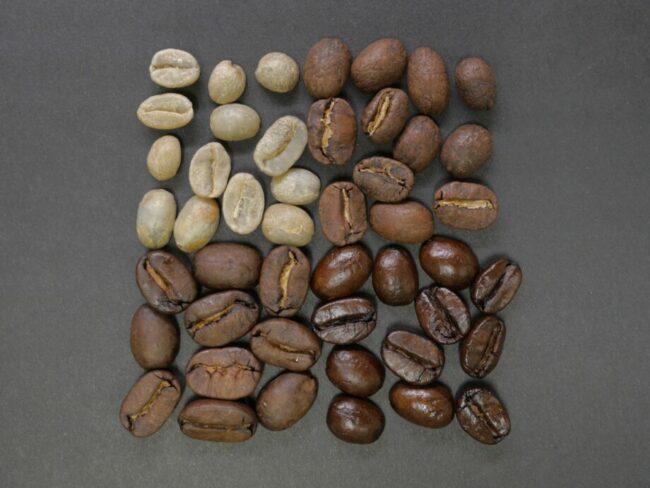Roasting is the magic touch that turns green coffee beans into the rich aromatic powerhouses we cherish. Raw beans, in their initial state, offer little hint of the aromatic brew they can become. Through the precise application of heat, these beans change in texture and aroma, revealing the beloved flavors of coffee.
The Roasting Process
Roasting coffee beans is a careful balance of time and temperature. Each bean undergoes chemical reactions that shift its internal structure, giving us the myriad of flavors we associate with coffee. A subtle change in roast time or heat can lead to vastly different flavor profiles.

Roasting: A Skilled Endeavor
Being a coffee roaster requires both knowledge and intuition. Over years of practice and countless batches of beans, roasters develop a keen sense of the perfect roast. This precision, coupled with experience, ensures each batch meets its full potential.
Different Roast Levels Explained
Light Roast: This roast stops after the first ‘crack’. It retains most of the bean’s natural flavors, making it bright and vibrant. Each sip offers a hint of the bean’s origin, whether that’s a berry note from an African bean or a citrus hint from a South American variety.
Medium Roast: The perfect middle ground. This roast introduces flavors from the roasting process, yet doesn’t overshadow the bean’s inherent qualities. The result is a harmonious blend of acidity and body.
Medium-Dark Roast: Here, beans take on a glossy appearance due to emerging oils. This roast is bolder, offering a depth of flavor that hints at chocolate or toasted nuts.
Dark Roast: At this stage, the beans are shiny with oils, and the flavors are intense. Though often associated with strength, these beans carry smoky and caramel undertones and surprisingly have less caffeine due to the extended roasting.
Roasting Terms Clarified
With terms like ‘French’, ‘Italian’, and ‘Turkish’, it’s easy to get lost. Each brand or region might have its own interpretation of these terms. As roasting techniques become more refined, the lines between these definitions blur, leading to a broader spectrum of flavors and roasts.
The Caffeine Myth Clarified
A common misconception is that a dark roast has more caffeine. However, caffeine content varies more by bean type and preparation method than by roast level. While a scoop of light beans might seem to have more caffeine, when beans are weighed, the differences often even out.
Conclusion
Coffee is more than just a drink; it’s an experience. Each bean carries a history, and roasting sets the stage for its story. As you explore different roasts and flavors, remember that each cup offers a unique taste of a rich tradition and passionate innovation.

Editorial Staff
Our writers, editors, content managers, and SEO specialist. We all take part in crafting amazing articles. We spend hours ensuring that each article is based on facts, researched, and thorough. You'll never want to click the back button to look for more answers other than here!
